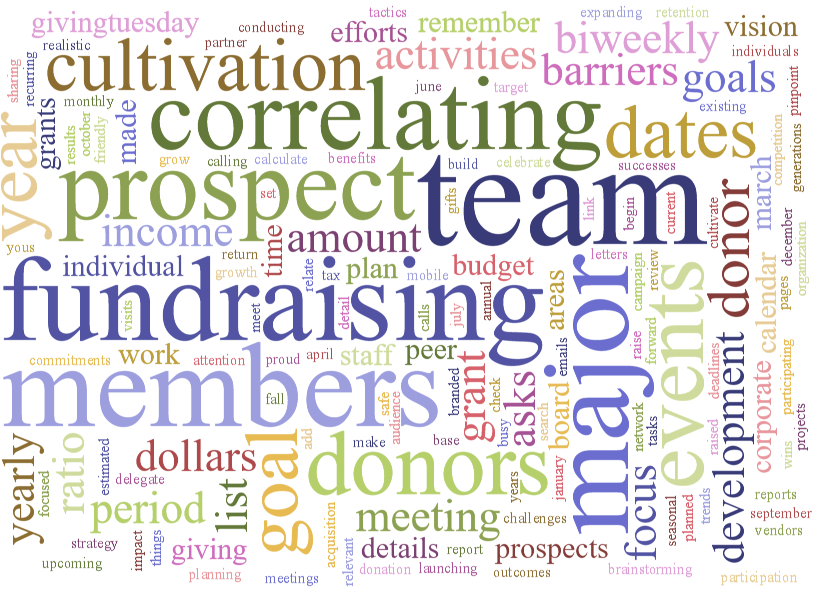
Introduction
This guide is for creating, implementing, and managing a fundraising and work plan. It includes reviewing past efforts, allocating resources, setting goals, and evaluating outcomes to optimize fundraising efforts and organizational effectiveness.
Review Past Fundraising Efforts
Analyze Last Year’s Fundraising Results:
- Identify fundraising activities and their outcomes for individual donors, major donors, grants, and corporate contributions.
- Highlight successes, focusing on impactful and proud achievements.
- Identify challenges or areas needing more attention, resources, or adjustments.
Resource Assessment
Catalog Available Resources:
- List board members, budget allocations, staff, volunteers, vendors, and technology that can support fundraising efforts.
- Evaluate the availability and efficiency of current resources.
Plan Fundraising Activities
Strategize Donor Growth:
- Focus on acquisition, retention, and upgrading of donors.
- Address these questions:
- Are there sufficient donor prospects for this year?
- What additional prospects can be identified and contacted?
- What strategies can attract new donors (e.g., grants, partnerships, events)?
Vision Alignment
Revisit the Organization’s Vision:
- Confirm if the vision remains consistent or requires adjustments for the upcoming year.
Identify Trends and Audiences
Understand Giving Patterns:
- Assess how different generations and tax benefits influence individual and corporate giving.
Set SMART Goals
Define Specific, Measurable, Achievable, Relevant, and Time-bound (SMART) Goals:
- Include objectives like dollars raised, number of new donors, recurring gifts, board participation, or donor network expansion.
- Ensure goals resonate with donor interests.
Focus Areas for the Year
Targeted Campaigns and Strategies:
- Launch peer-to-peer campaigns.
- Participate in initiatives like #GivingTuesday.
- Optimize donation pages for mobile accessibility and branding.
Detail Fundraising Tactics
Implement and Monitor Strategies:
- Follow through on specific tasks, such as calling donors, reporting team results, brainstorming, and sharing resources.
- Regularly celebrate successes to maintain team motivation.
Develop a Budget
Plan Financial Resources:
- Link budget details to a calendar of fundraising activities.
Create a Fundraising Calendar
Organize Activities Chronologically:
- Document existing commitments (e.g., events, meetings, grant deadlines).
- Add seasonal focus areas like March, Target, and new monthly donors. Fall: Prepare for #GivingTuesday and year-end fundraising.
Detailed Quarterly Work Plan
January to March:
- Define goals and allocate a percentage of yearly fundraising needs.
- Identify major donors, grant opportunities, and donor cultivation strategies.
- Address expected barriers and set team meeting schedules.
April to June:
- Refine goals and evaluate progress.
- Expand major donor outreach and adjust cultivation strategies.
- Organize key events and grant applications.
July to September:
- Focus on mid-year evaluations and adjusting strategies for donor retention.
- Host events and secure additional grant funding.
October to December:
- Intensify efforts on year-end campaigns.
- Celebrate milestones and solidify plans for the following year.
Celebrate Successes
Acknowledge Wins:
- Share achievements across the team and with stakeholders.
- Build morale by recognizing contributions and celebrating milestones.
Conclusion
By following this fundraising and work plan guide, nonprofit organizations can better align their efforts with strategic goals, optimize resources, and maximize fundraising potential. Regular assessments and adjustments will ensure the plan remains effective and responsive to evolving circumstances.